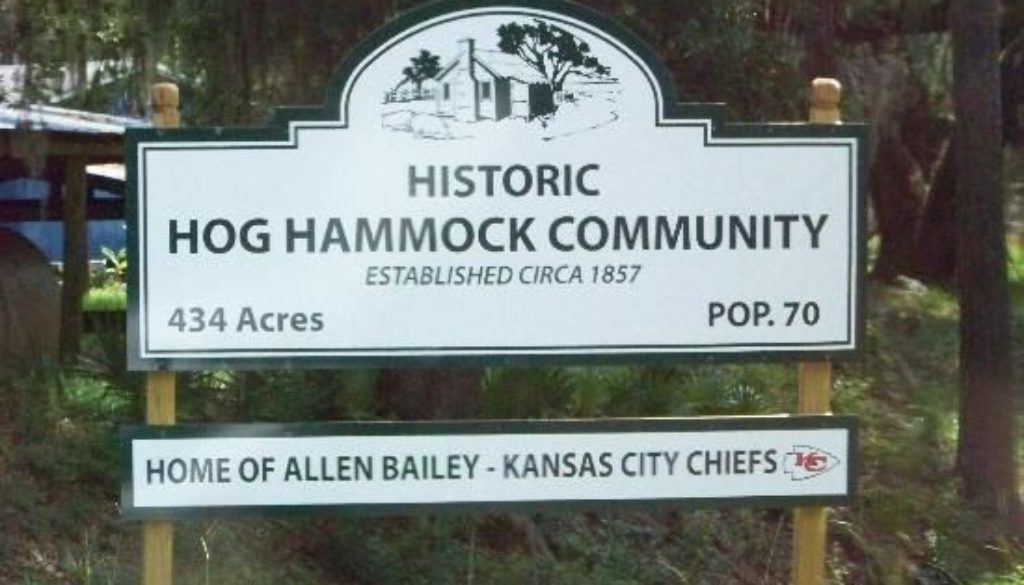The Golden Rule

Jekyll Island, GA
May 14, 2022
On Sapelo Island, I had to constantly remind myself where we were. It felt more like a foreign country than a secluded island in my own state.
And, in some sense, it is. Its dedicated citizens have a unique culture and a proud history that is being pressed to oblivion by the vicissitudes of nature, and by government agents using backstage directives to replace the characters on the set.
Mother Nature has a fickle appetite. Right now, she’s hungry for Sapelo. Crops are jeopardized, and land is being eaten away by the relentless rise of ocean water. Fields of cane and indigo…harvested by hand…are regularly soaked in rising tides almost a foot deep. The displacement of local crops by salt water plants persists each year, as if in secret complicity with conniving interests from the other side of the estuary.
With ingenuity free, government leashed, and markets allowed to work, constraints of nature can be mitigated, if not completely overcome. The history of the West since the Industrial Revolution is documented proof that capital accumulation is the main means of enhancing productivity, thwarting poverty, compounding wealth, and nourishing civilization.
We often ask how poverty comes about. But that’s the wrong question. Poverty, after all, is the default condition in a state of nature. It was the plight of man since the dawn of time.
Poverty is the tide, pounding relentlessly against the levees of capital that sustain civilization. Till a couple hundred years ago, these levees didn’t exist. Now, we take them for granted. But without constant reinforcement, they’ll give way, and wash generations of wealth out with the waves.
Rather than muse on the origins of poverty, as historian Tom Woods put it, we really should wonder at the source of wealth. What happened a couple hundred years ago that transformed Western life from ubiquitous squalor to levels of affluence that permit most of our destitute poor to have amenities unavailable to Medieval kings?
In Europe and America, sound money facilitated savings, trade, and capital formation that enabled wealth to grow and prosperity to spread. Less than 10% of the world’s population now lives in the abject poverty that 90% of it endured a century ago. This could only happen thru the proliferation of capital.
But prosperity retreats when that flow is frustrated. When “public” officials and private interests conspire to counterfeit the currency, constrain competitors, deny them resources, and preclude them use of their own property, nature will be free to take its toll. Without ability to retain land, procure tools, or pay the taxes, levees go unbuilt, fields lie flooded or fallow, structures dilapidate, animals die, and owners yield the family farm as the main prize in the terms of surrender.
Governments always and everywhere follow the Golden Rule: he who has the gold makes the rules. On Sapelo Island, the Gullah Geechee have no gold, and little access to the mine. But they often get the shaft.
Beneath the shiny veneer and saccharine platitudes, politics exists for one purpose: to transfer power and property from hapless outsiders to connected insiders. It happens everywhere.
Special interests sense opportunity for power and profit. But rather than engage in overt pillage or dicey negotiations, they enlist the government to launder loot, disguise theft, and legalize their plunder. And, as part of the Establishment’s genius promoting a nominal ”democracy”, naive voters are made to believe they did it to themselves.
Propaganda runs rampant. Commerce is assured, tourism extolled, prosperity promised, and tax bases are guaranteed to rise.
But so, implicitly, are tax payments. As property prices increase, incomes don’t keep pace. Long-time locals must sell their land to pay the tax. They’re forced out, so they pack up and leave. Bulldozers arrive, and old homes are razed as new mansions are raised.
On Sapelo, as in many places, a racial brush applies a distinct color to the general canvas. But everywhere the standard palette is black and white.
Government officials patronize corporate artists to frame new landscapes in urban centers, coastal towns, inter-mountain hamlets, and Midwestern communities. New scenes are painted as traditional portraits are wiped away.
The Gullah Geechee once had half a dozen communities spread across Sapelo Island. They’re now confined to Hog Hammock, forced there by broken promises, corrupt bargains, and back-room deals. As the tide advances from without, commercial agents lay siege within.
RJ Reynolds bought Sapelo in 1934, and held it till his death three decades later. According to MB…Sapelo native and Geechee advocate…Reynolds worked with the state to forge deeds and engage in predatory land swaps that extracted property from Geechee residents.
By agreement with the government of Georgia, Reynolds converted most of the island into a pleasant-sounding, and superficially innocuous, “Wildlife Management Area”. As with National Parks and other sweet-sounding schemes of state appropriation, this designation forced residents off their land, while raising the value of adjacent acreage the government‘s benefactors retained.
As we rode around the Hog Hammock community of the Gullah Geechee, we saw luxury cottages rising around their humble homes. “You can tell which homes belong to members of the community”, MB told us. “They are at ground level. The ones on stilts belong to the newcomers.”
All the new construction is going up on stilts. Those on ground level are emptying out. At some point, “safety” ordinances will no doubt be passed to require all existing homes to be raised above the height of the sea. If they are, the expense will push remaining recalcitrants out.
Several of the big houses recently built were intentionally erected to confine the native community to a Geechee ghetto. Some structures were strategically placed to deprive residents access to their historic fishing holes.
The pressure of “public-private partnership” is working as intended: to the benefit of the “private” at the expense of the ”public.”
The Sapelo Gullah Geechee communities have been reduced from five a century ago, to only one today. And their population has fallen by more than 90%.
Economic reality is forcing long-time residents away. As in many small communities, kids want to see the world, so they leave when they can, with no intention of coming back.
At some point, unless the tide turns, they may have nothing to return to.
JD




Weeping Time – JD Breen's Diary
May 17, 2022 @ 3:47 am
[…] spending a couple days exploring Gullah Geechee culture. Our group left Sapelo Island on the first ferry this morning. After disembarking under a […]